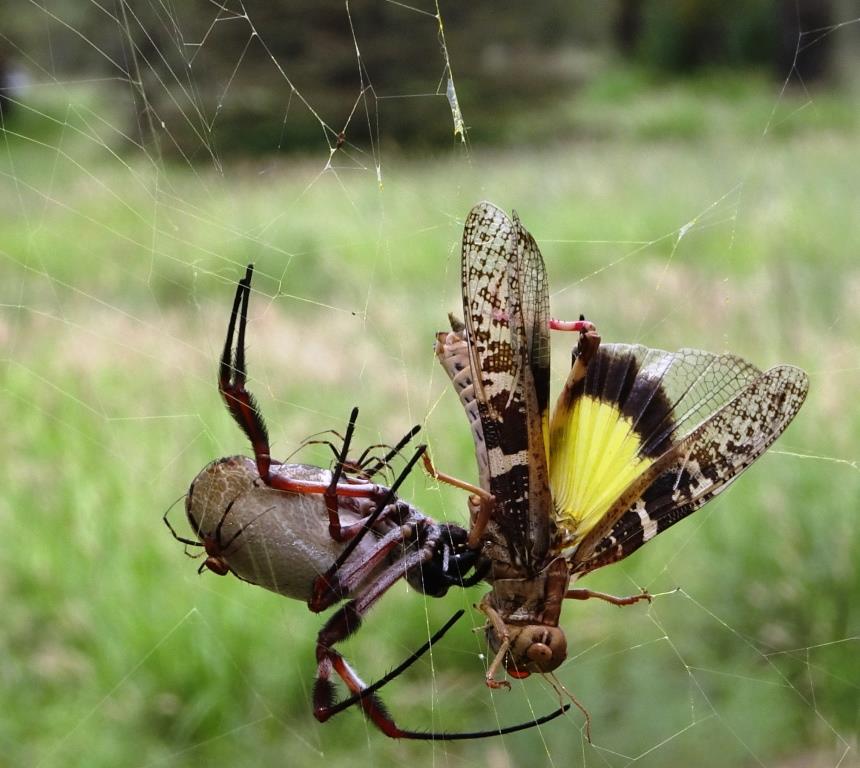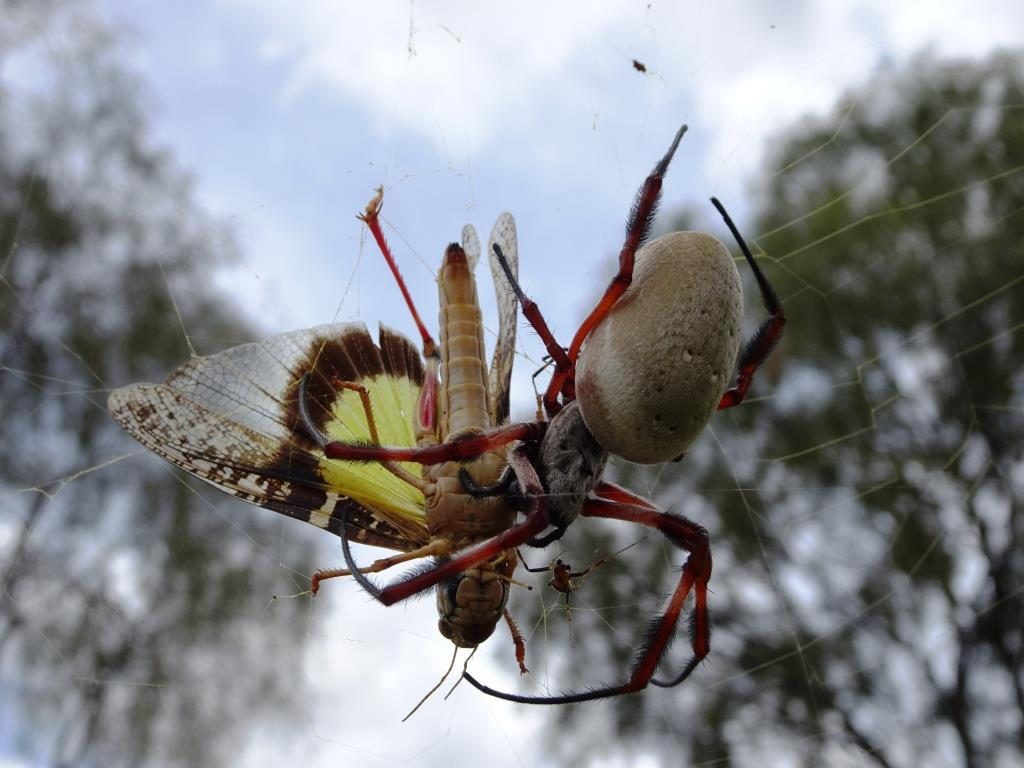With all the rain we’ve had in central Australia over the last couple of months, the abundance of Arthropods (including insects, arachnids, myriapods, and crustaceans) has gone through the roof. Once of the obvious examples that long-term residents may notice is the increase in the number of Golden Orb Weaving Spiders (Nephila edulis). These are large fawn-grey spiders that produce a silk with a distinctive yellow colour. The large female constructs a web that is up to a meter in diameter, with guy-lines as long as three to four meters. Webs are often set at an oblique angle off the vertical, with a male (the size of which pales in comparison to the female) that takes up position to one side. Females can produce over 250 meters of silk in one sitting, which is strong and elastic, and the webs have even been known to ensnare small birds (such as finches). The silk is not only used to construct the web, but also to spin an egg sac. The female will fast for several days in preparation for spinning the oval sac, attached to a branch or other object in the vicinity of the web, in which the eggs are deposited.
So why are there so many of these healthy-looking spiders around at the moment? The spiderlings (baby spiders) of Nephila species have the ability to hatch in the egg sac and stay dormant, for over a year, until favourable weather conditions arise. Like many animals, spiders require moisture to remain hydrated, and do best when there is rain around or there are generally wet conditions. After the rains, many of the young spiderlings would have ventured out from the egg sacs and feasted on the excess food around.
I don’t think we need to point out the grasshopper population that has flourished in recent weeks – this is an epic food source for the orb spiders. The persistent rains have resulted in lush green grasses and small shrubs, which is food for the grasshoppers, and they have responded by increasing in abundance. Many wood boring beetles have spiked in numbers, as they breed in wood or under layers of bark, which is easier to bore into when wet. A range of other invertebrates have prospered with the rains as well, and hence the food source for spiders has increased dramatically. In addition, spider webs become stickier and thicker due to the moisture soaked up from rain, which can result in more food being trapped. All these factors result in some very healthy looking spiders indeed! This will be made even more obvious in the following wet period, as healthy spiders will breed more prolifically, resulting in an increase in the spider population. Arachnophobes – beware!
Check out the video of a very large Nephila edulis feasting on a grasshopper at the Land for Wildlife office recently. I had been walking nearby when I spotted the female. My feet moving through the grass stirred several dozen grasshoppers, one of which met its fate in the web of the female. The grasshopper struggled for a few moments before the female pounced, plunged in her fangs and then stood back waiting a moment. After waiting for the grasshopper to stop thrashing in her golden web, the female sat feasting, while her young crawled about around her.
Categories:
Arachnids, Native Fauna

